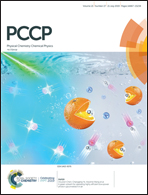Cleavage of alumina cells in organic acid solutions during high voltage anodization
Abstract
The split effect of porous alumina cells with the formation of nanotubular films has been reported in several papers, however, many unclear aspects of such growth still remain. In this study, the possible mechanism of alumina nanotube formation in an aqueous solution of tartaric acid was proposed. According to SEM, EDX, and XPS studies, entrapment of carbonaceous species in large amounts, especially at the back-side, proceeds due to cleavage of the barrier layer at extremely high current density. The transport of anions through these gaps to the metal|film interface and reduction therein leads to the formation of a composite film with alumina/carbon/graphene oxide nanoplatelet caps.



 Please wait while we load your content...
Please wait while we load your content...